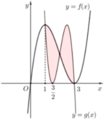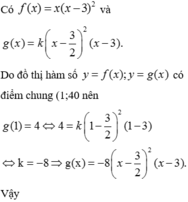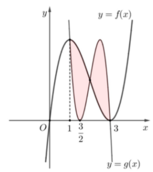Cho f x = x 3 + a x 2 + b x + c và g x = f d x + e với a , b , c , d , e ∈ R có đồ thị như hình vẽ bên, trong đó đường cong đậm hơn là đồ thị của hàm số y=f(x). Diện tích hình phẳng giới hạn bởi hai đường cong y=f(x) và y=g(x) gần nhất với kết quả nào dưới đây?

A. 4,5.
B. 4,25.
C. 3,63.
D. 3,67.




 .
. .
.
